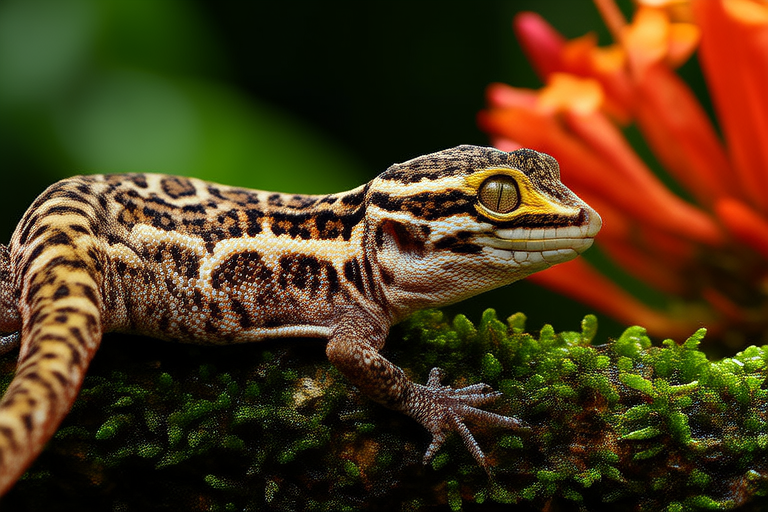5 Myths About Chameleons That Could Be Hurting Your Pet’s Well-being
Chameleons are fascinating creatures that have captured the hearts of many animal enthusiasts. These unique pets require specific care to thrive, making it essential for owners to understand the facts from fiction. Unfortunately, several misconceptions about chameleons persist, which can lead to improper care and negatively affect their health and well-being. This article aims to debunk five common myths about chameleons, providing accurate information based on scientific understanding and veterinary advice. By learning the truth behind these myths, you can ensure your chameleon lives a long, healthy life.
Myth 1: Chameleons Change Color to Match Their Surroundings
The most widely believed myth about chameleons is that they change color to blend into their environment. While this idea makes for a compelling image, it’s far from the truth. In reality, chameleons alter their color primarily for communication and temperature regulation. The vibrant hues they display serve various purposes, such as signaling aggression, submission, or readiness to mate. Understanding this helps owners provide appropriate lighting and temperature conditions, crucial for maintaining their health.
For example, chameleons may appear brighter when basking under UVB lights, indicating they are absorbing necessary vitamin D3. Conversely, duller colors might suggest discomfort or illness. By recognizing the true purpose of color changes, owners can better monitor their pet’s well-being.
Myth 2: Chameleons Can Survive on a Diet of Crickets Alone
Another prevalent myth is that crickets alone suffice for a chameleon’s diet. This belief can be harmful, as it overlooks the nutritional needs of these reptiles. A balanced diet is essential for preventing malnutrition and ensuring optimal health. Chameleons require a variety of insects, including waxworms, superworms, and roaches, to obtain all necessary nutrients.
Veterinary advice suggests supplementing the diet with leafy greens and fruits, such as collard greens and berries, to provide additional vitamins and minerals. Additionally, dusting insects with calcium and multivitamin powders ensures adequate intake of essential nutrients. Owners should also consider gut-loading insects before feeding them to their chameleons, enhancing the nutritional value of each meal.
Myth 3: Chameleons Thrive in Group Housing
It’s commonly thought that chameleons enjoy the company of other chameleons. However, this assumption can lead to stress and aggression within the enclosure. Chameleons are solitary animals by nature, and keeping multiple chameleons together often results in territorial disputes, leading to injuries or even death. Even seemingly peaceful interactions can cause undue stress, impacting their overall health.
To promote a healthy living environment, it’s recommended to house each chameleon separately. Providing ample space, vertical climbing structures, and hiding spots within individual enclosures helps reduce stress and encourages natural behaviors. Regular monitoring of behavior and health indicators, such as appetite and activity levels, ensures that each chameleon remains comfortable and content.
Myth 4: Chameleons Don’t Need UVB Lighting
A frequently held misconception is that chameleons don’t require UVB lighting. This belief can have severe consequences for their health. UVB light is vital for the synthesis of vitamin D3, which aids in calcium absorption. Without sufficient UVB exposure, chameleons can develop metabolic bone disease, a condition characterized by weak bones and deformities.
To prevent such issues, it’s crucial to install full-spectrum UVB bulbs within the enclosure. Positioning the light at an appropriate distance (usually 12 inches) ensures adequate exposure without causing overheating. Regularly replacing the bulbs every six months guarantees consistent UV output. Supplemental calcium powder can further support bone health, but it should not replace proper lighting.
Myth 5: Chameleons Can Survive in Any Temperature Range
Lastly, there’s a misconception that chameleons can adapt to any temperature range. While chameleons are hardy creatures, they still have specific temperature requirements for optimal health. Exposing them to inappropriate temperatures can lead to stress, reduced immune function, and increased susceptibility to diseases.
Owners should maintain a temperature gradient within the enclosure, typically ranging from 75°F to 95°F during the day and slightly cooler at night. Proper heating methods include ceramic heat emitters and basking lamps, ensuring consistent warmth. Monitoring temperature fluctuations with thermometers and adjusting heating elements as needed prevents overheating or chilling, promoting a stable environment.
Tips for Responsible Chameleon Ownership
Owning a chameleon comes with significant responsibilities. To ensure your pet’s well-being, follow these guidelines:
- Research extensively: Before acquiring a chameleon, thoroughly study its care requirements. Understanding their dietary needs, housing preferences, and behavioral traits prepares you for the commitment.
- Consult reptile specialists: Seek advice from veterinarians specializing in exotic animals or experienced breeders. They can offer personalized guidance tailored to your pet’s specific needs.
- Provide a suitable habitat: Create an environment that mimics their natural habitat, complete with appropriate lighting, temperature gradients, and climbing structures. This setup encourages natural behaviors and reduces stress.
- Monitor health regularly: Keep an eye on your chameleon’s behavior and physical appearance. Early detection of health issues allows for timely intervention, improving recovery chances.
- Stay informed: Reptile care evolves over time, so continue educating yourself about advancements in husbandry practices. Join online forums, attend workshops, and participate in local reptile events to stay updated.
In conclusion, dispelling common myths about chameleons is crucial for responsible ownership. By understanding the truths behind these misconceptions, you can provide your pet with the best possible care. Remember, a well-informed owner is key to ensuring a happy, healthy chameleon. Embrace the journey of learning and caring for these remarkable creatures, and you’ll be rewarded with years of companionship and wonder.
